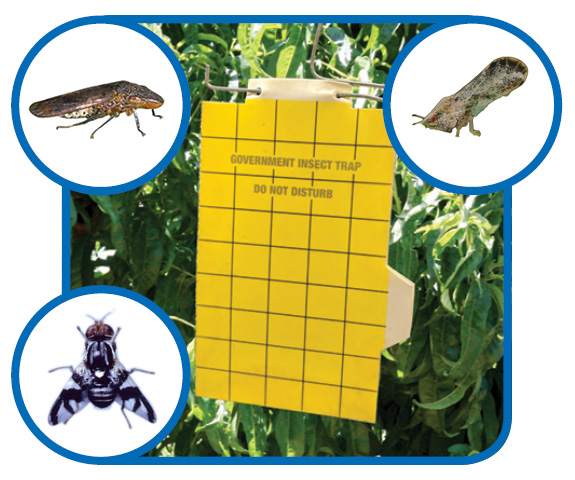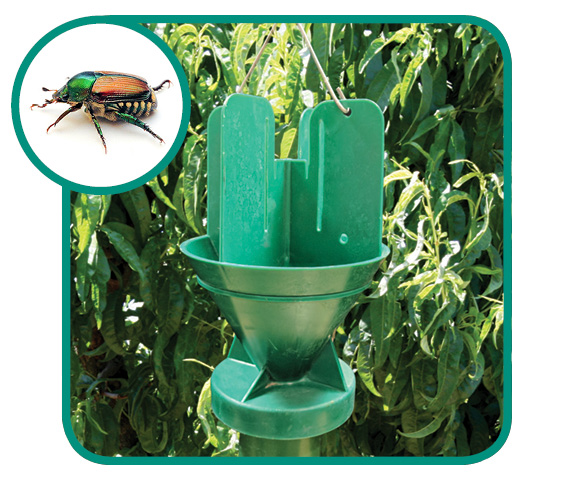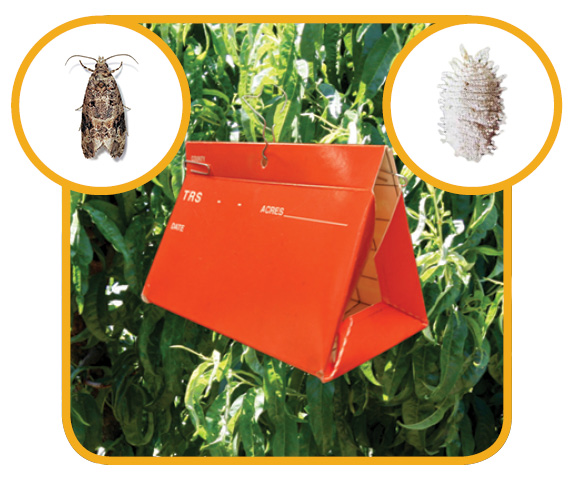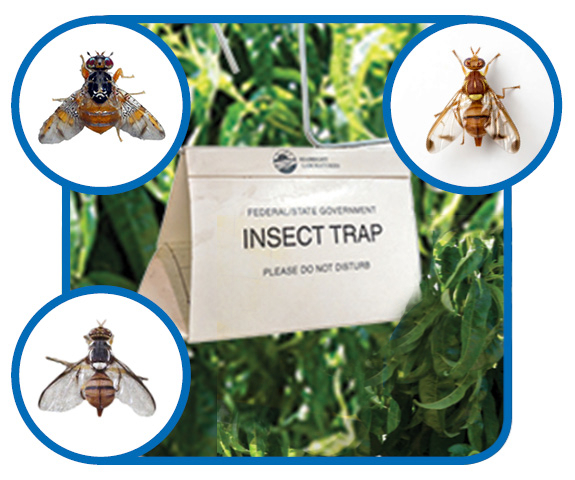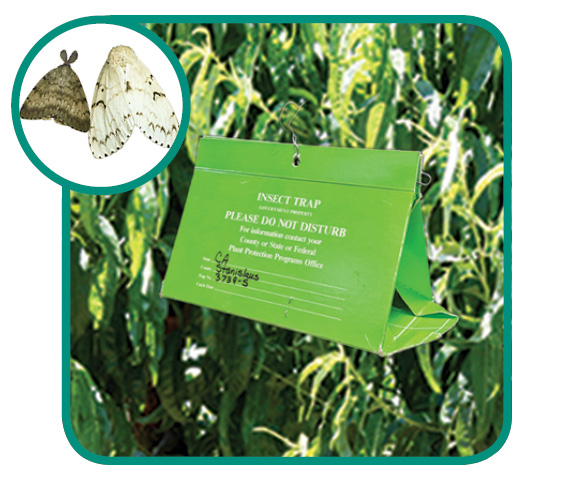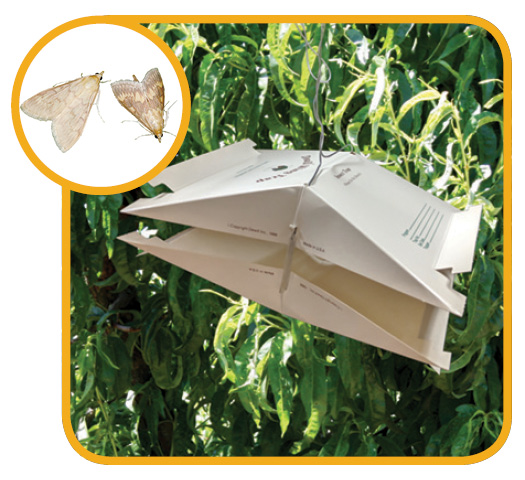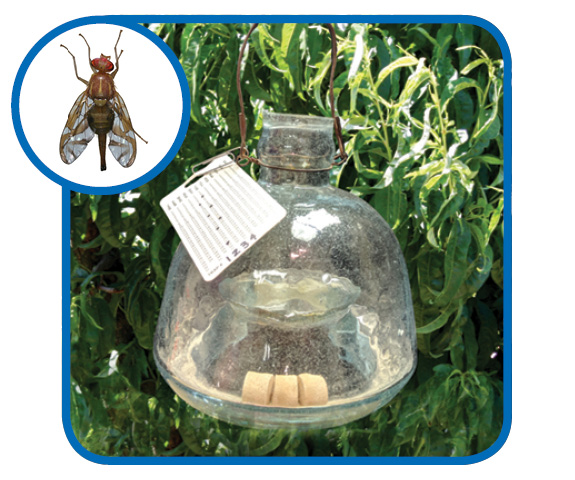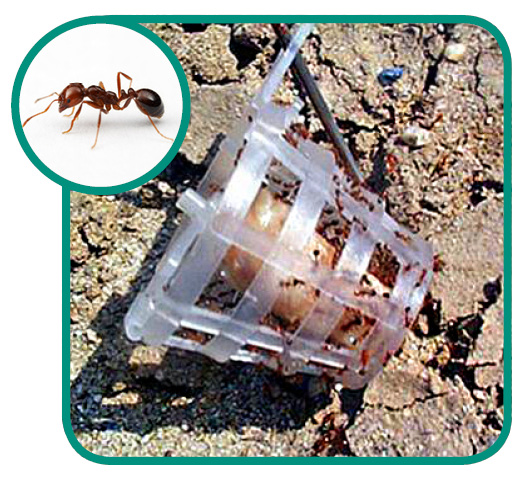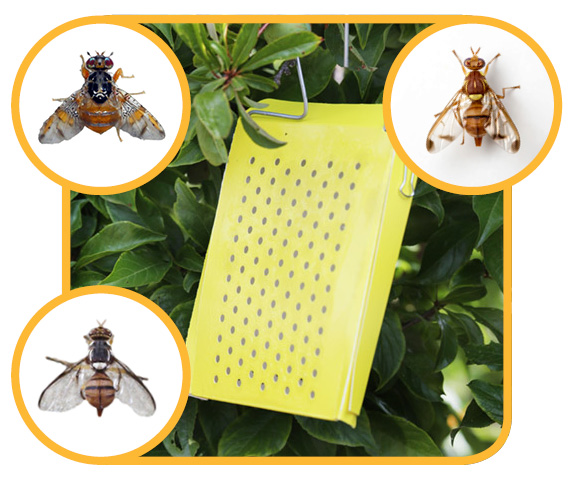Pest Detection
Insect Trapping
The Stanislaus County Pest Detection Program focuses on finding destructive insect pests and the plant diseases they may carry. The program is part of a three pronged approach to protect homeowners and the agricultural and horticultural industries in Stanislaus County: Pest Exclusion, Pest Detection and Pest Eradication. County Pest Detection Trappers, working year-round, act as detectives, examining strategically placed insect traps located in plants favored by specific invasive pests.
With homeowners' cooperation, a majority of traps are placed throughout local urban areas, which are the most common points of introduction. Some traps contain specific insect pheromones, while others use a food or color attractant to lure the target pest if it is present in the surrounding neighborhood. It is extremely important to find invasive pests before they become established and do serious damage. The most important component of the successful Pest Detection Trapping Program is the partnership and cooperation of homeowners in granting permission to host insect traps on private property. Through early detection, the likelihood of these pests becoming established in the state is lessened and the cost and environmental impact of eradication is minimized.
More Information
For additional insect and pest information for homeowners, please visit the University of California's Statewide Integrated Pest Management Program website.
For more information on invasive insects, please visit the USDA sponsored Hungry Pests website.
More target pest profiles can also be found on CDFA's Insect Pest Profile website. Click on the links below to find more information about specific target insects in Stanislaus County's Pest Detection program.
Questions about a trap placed in your yard?
Contact us - agcom50@stancounty.com



